In February 2019, the Faculty of Education (currently: Faculty of Humanities and Social Sciences) at Hiroshima University was nominated as a member of the International Network of Educational Institute (INEI). (see News from Hiroshima University and INEI Homepage)
In January 2020, the Educational Vision Research Institute (EVRI) Hiroshima University celebrated the accession by holding “PELSTE 2020” a series of programs on Peach Education, Lesson Study, and Teacher Educator (see PELSTE 2020 (only in JP)). PELSTE 2020 aimed to develop a strong research collaboration among INEI member Institutes.
To ensure that Hiroshima University becomes widely recognized as an international research center for Peace Education and Lesson Study, PELSTE 2021 will serve as a platform where researchers from all over the world can overview the frontline of these two research fields and create a new network. PELSTE 2021 will fulfill its mission by foreseeing further research collaboration. The series of PELSTE programs is expected to serve as a preparation for the INEI annual conference to be held in Hiroshima in 2024.
Greetings from EVRI Director
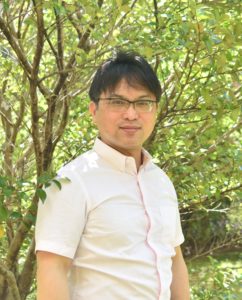
It is a great honor to host PELSTE 2021 online as the pandemic continues.
PELSTE was established with the aim of bringing researchers together to contemplate the objectives of peace education and lesson study in Hiroshima, a symbolic place in Japan.
Hiroshima is a treasure trove of materials for surveying peace and lesson study. PELSTE 2020 provided us with a deeper understanding of these materials by visiting, observing, interviewing, and discussing with participants. At PELSTE 2021, we would like to provide a variety of indirect experience media to replace these activities.
Hiroshima is a crossroad for inquiring about peace and lesson study. Through online dialogues, we hope that young scholars around the world will exchange their ideas of “peace” in the arena of education and share their methodology of studying as well as researching “lesson” from their cultural contexts and academic visions.
Hiroshima is an incubation initiative toward innovative peace education and lesson study. We expect PELSTE 2021 to encourage many researchers to visit Hiroshima in the future, strengthen ties with the faculty of Hiroshima University, and lead to further exchange of ideas for joint research projects.
We sincerely welcome you to PELSTE 2021. We look forward to meeting you online.
Prof. Dr. Kazuhiro Kusahara
Welcome Message
Greetings from PELSTE 2020 Members
Participants from PELSTE 2020 sent us video welcome messages for PELSTE 2021. PELSTE 2020 members provided us with a tremendous amount of fruitful ideas for Peace Education, Lesson Study, and Teacher Educator Development. Please watch the videos to know more about PELSTE.

.
| fff |
|
|
||||
|
Without a doubt, PELSTE 2020 has been one of the most enriching learning experiences of my life. With great care and attention to detail, the team led by Professor Kusahara created plenty of hands-on opportunities for collaborative learning. Thanks to the skillful combination of lectures, workshops, and visits, we learned about different educational approaches to peace education and the Japanese unique professional development model, lesson-study. The team expanded these activities with many opportunities to engage in open dialogue with public officials, school administrators, teachers, and students. Rich discussions with colleagues from Hiroshima University and those who, like me, traveled from Brazil, Canada, Singapore, and the UK enriched every single moment of the full experience. For anyone interested in learning with others about education in Japan, PELSTE is the place to be! | |||||
|
|
|
||||
|
|
As a doctoral student with a passion for education for peace, PELSTE 2020 provided me with an invaluable learning experience. School and museum visits to see how peace has been integrated into Hiroshima education and society gave me opportunities to have thought-provoking discussions with Japanese teachers, lecturers, educators, students and the locals. This helped me achieve better understanding of the unique meanings and characteristics of peace education in Hiroshima. This programme also gave me the opportunity to learn alongside like-minded people, including Hiroshima team and other participants around the world. The harmonious relationships forged throughout the programme were priceless and paved the way for potential collaboration among us. The extraordinary kindness of the Hiroshima team in taking care of all participants impressed me and are never far from my mind. For master and doctoral students who are interested in peace education and also in teacher education, PELESTE is highly recommended to broaden your study experience. |
 |
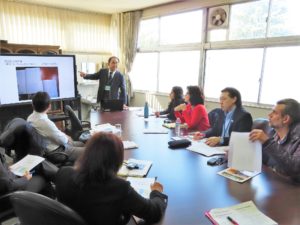 |
 |
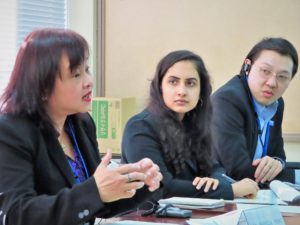 |
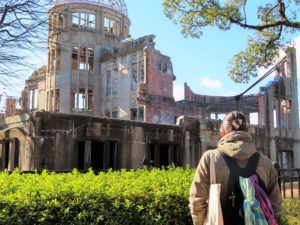 |
 |
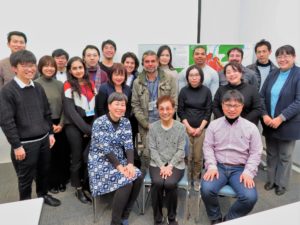 |
 |
 |
 |
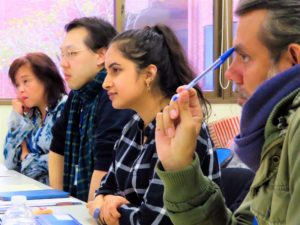 |
 |
 |
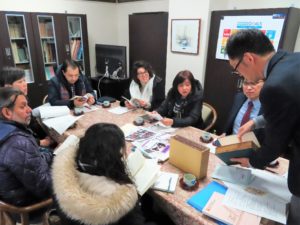 |
 |
【PELSTE 2020 Participants】
・Prof.Dr. Agnaldo Arroio:Faculty of Education of the University of São Paulo(Brazil)
・Dr. Diana Rodríguez-Gómez (Ed.D.) :University of Wisconsin,Madison(America)
・Dr. Isabella Wong Yuen-Fun (Ph.D.):The National Institute of Education, Nanyang Technological University(Singapore)
・Ms. Rija Saleem:Ontario Institute for Studies in Education,University of Toronto(Canada)
・Mr. Chawin Pongpajon:UCL Institute of Education(England)
Participants & Audience
*Link to the original page for registration for Participants
There are two ways to participate in PELSTE 2021: Participants or Audience. The former category follows three steps of registration (January), study (February), presentation at the symposium (March), the latter category follows registration (February), free study (February), and participation in symposia (March).
Participant
Participants will be involved in full participation, i.e., they will have to study the materials online in February and organize online symposia with other participants. The symposia comprise two sessions: Peace Education and Lesson Study. Thus, participants can choose either of those programs
Certificate: Certificates will be issued to the participants. This certificate will also be the invitation letter to the next PELSTE program that welcomes participants to Hiroshima for further study and collaborative work.
Audience
Audiences are to attend online symposia that the participants (Category A) will present. There will be no selection process for attendees; however, they need to apply through a website form in the following link. Learning materials are available to the attendees for free.
Attendance: Audiences will gain access to the online symposia and learning materials. Audiences are free to attend both online symposia and be involved in the discussions.
Program
PELSTE 2021 offered participants and audiences the opportunity to learn and discuss the frontline of Peace Education and Lesson Study. For registration, please click banners to see the detail.
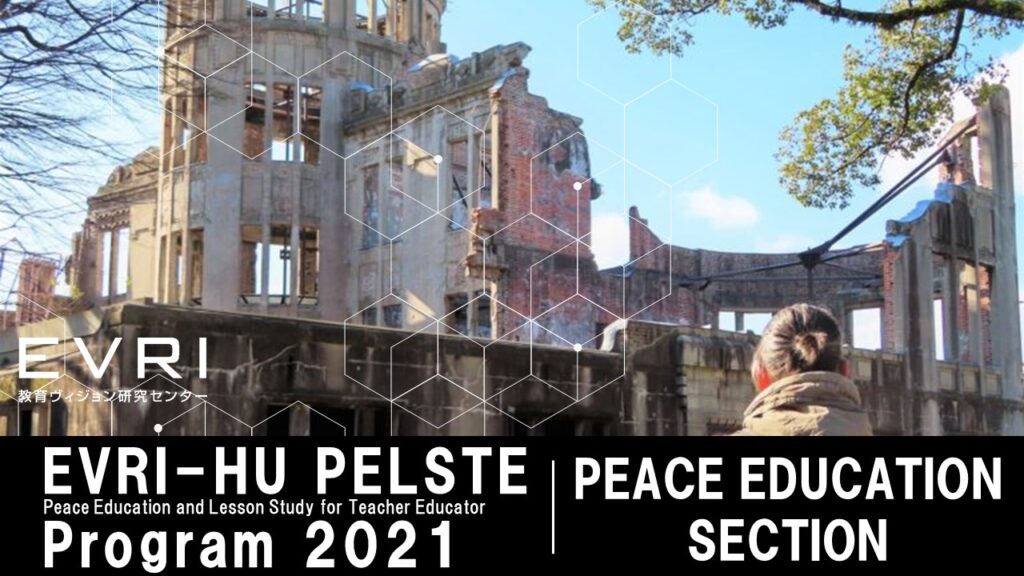 |
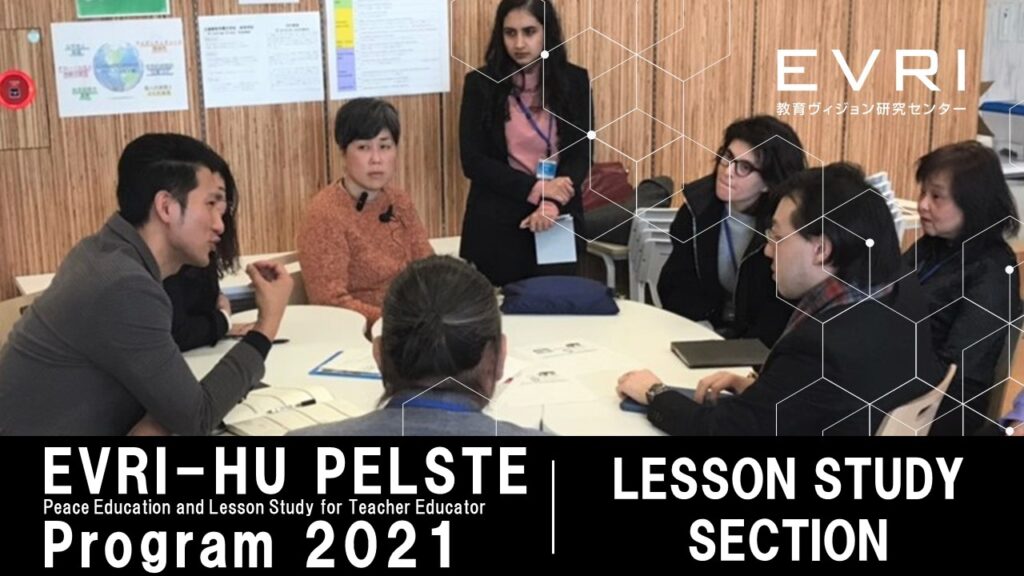 |
|||
| CLICK HERE TO THE PAGE | CLICK HERE TO THE PAGE | |||
| Flyer for PE section |
Flyer for LS section |
Learning Materials
PELSTE2021 offered all participants and audiences learning materials about Peace Education and Lesson Study. Participants were to see through those materials with key questions and developed the contents of symposium with coordinators.
【Peace Education Section】
Key Questions
Here are the Key Questions that we will explore at the symposium. You can use them as guidelines when going through the learning materials in advance.
1. How and for what purposes was peace taught in Hiroshima?
2. How and for what purposes has peace been taught in your country or region?
3. How and for what purpose should we teach about peace?
1. Interviews with Peace Educators
This is an interview series featuring three peace educators from different generations in Hiroshima after WWII. We asked them the same set of five questions as follows:
1. Why did you become a teacher?
2. How did you teach peace education?
3. What were the motives and challenges in teaching about Hiroshima?
4. What does peace education mean to you in Hiroshima?
5. What is your message to peace educators around the globe?
Attendees are expected to analyze how they discuss their practice of peace education in Hiroshima and critique the narratives from their viewpoint.
When you watch this video, it is recommended that you set up subtitles/closed captions. These will be helpful to “open transcripts” from option “・・・” under the video.
| FILE 1: Mr. Hiromu Morishita | FILE 2: Mr. Shunsuke Taga | FILE 3: Mr. Shotaro Nomoto |
2. Comments on Interviews with Peace Educators
To facilitate bettwe understanding of the contexts, two researchers from Hiroshima University provide some comments about the interviews.
| Comments by Prof. Dr. Takayuki Kawaguchi | Comments by Prof. Dr. Yasushi Maruyama | |||
3. HiGA Peace Education Project
Hiroshima Global Academy (HiGA) has developed a peace education curriculum in cooperation with EVRI in 2019–2021. You can watch the video reports of the four units (Projects A–D) and the students’ presentation. This curriculum proposes a new method of peace education in which school education is not a memory device of past tragedies in Hiroshima but a public sphere to reconstruct peace through dialogue with others. Starting from making a textbook with U.S. students (A Project), HiGA students explore the concepts of peace (B Project), critique museums related to war and peace all over the world (C Project), and finally create the HiGA museum with a virtual gallery talk.
| Intro~A project | B project | |||
| C project and D project | Gallery talk | |||
Further Reading
- Symposium Inheritance of HIROSHIMA Memory and Emerging Reconciliation. E-Journal of Philoso@hy of Education Vol. 5.
- Lifton, R. J. (1991). Death in Life: Survivors of Hiroshima. The University of North Carolina Press.
- Yoneyama, L. (1999). HIROSHIMA TRACES Time, Space, and the Dialectics of Memory. Univesity of California Press.
- Zwigwnberg, R.(2014). HIROSHIMA The Origins of Global Memory Culture.Cambirige Univesity Press.
- Cremin, H. (2015). Peace education research in the twenty-first century: three concepts facing crisis or opportunity? Journal of Peace Education, 13 1-17.
- Bar-Tal, D. (2002). The elusive nature of peace education. In G. Salomon & B. Nevo (Eds.), Peace education: The concept, principles and practice in the world (pp.27-36). Mahwah, NJ: Lawrence Erlbaum.
- Langager, M. W. (2006). War Ideation and Peace Education in Japan and the US. The Journal of Social Science. 57, pp. 375-392.
- Hara, K. (2012). Peace Education in the 21st Century : A Comparative Study of Peace Education in Japan, Germany and Bosnia-i-Herzegovina. International Public Policy Studies. 17(1), pp.1-23.
- Page, J. S. (2010). Peace education. International Encyclopedia of Education, (3rd Edition). pp.1-8.
- Haavelsrud, M. (2008). Conceptual Perspectives in Peace Education. Encyclopedia of Peace Education. pp. 1-7.
- Short, J. D. (2005). Proposals for the Future Development of Peace Education in Hiroshima City – Based on a Comparative Analysis of the Peace Education Curricula of Hiroshima and Dresden. Journal of International Development and Cooperation. 11(1), pp. 85–103.
- Yoshida, K., Bui, H. T., & Lee, T. J. (2016). Does tourism illuminate the darkness of Hiroshima and Nagasaki? Journal of Destination Marketing & Management. 5(4), pp.333-340.
- Orihara, T. (2009). Peace Education in Japan’s Schools: A View From the Front Lines. The Asia-Pacific Journal, 7(16)-2, pp. 1-15.
- Ide, K. (2007). A Symbol of Peace and Peace Education: The Genbaku Dome in Hiroshima. The Journal of Aesthetic Education, 41(4), pp. 12-23.
- Thome, M. S. (2017). Hiroshima on Peace Education and Problems with U.S. -Centric Historical Narratives in a World Without Survivors. International Research Scape Journal. 4(3), pp.1-18.
- Doppen, F. H. (2000). Teaching and Learning Multiple Perspectives: The Atomic Bomb. The Social Studies, 91(4), pp. 159-169.
- Maguth, B. M. & Yamaguchi, M. (2020). Lessons from A-bomb survivors: Researching Hiroshima & Nagasaki survivors’ perspectives for use in U.S. social studies classrooms. The Journal of Social Studies Research. 44, pp.325-338.
Supplementary
Because the learning materials are partially highly contextual and local, following links will help your understanding. Please visit the links below as your want.
【Lesson Study Section】
Key Questions
1. How and for what purposes has Lesson Study (Jugyou Kenkyuu) been practiced in Japan?
2. How have practitioners in your country accepted and practiced Lesson Study?
3. What advantages do you think Lesson Study has? and How do you prospect the new stage of Lesson Study?
1. Lesson Study Manual for Teacher Educators: International Edition
Hiroshima University organized a large interdisciplinary project team from April 2010 to March 2016 to support a professional development program for the faculty of educational science at the Autonomous University of Santo Domingo in the Dominican Republic. This booklet is the result of the project, from which you will be able to acquire the basics of Lesson Study.
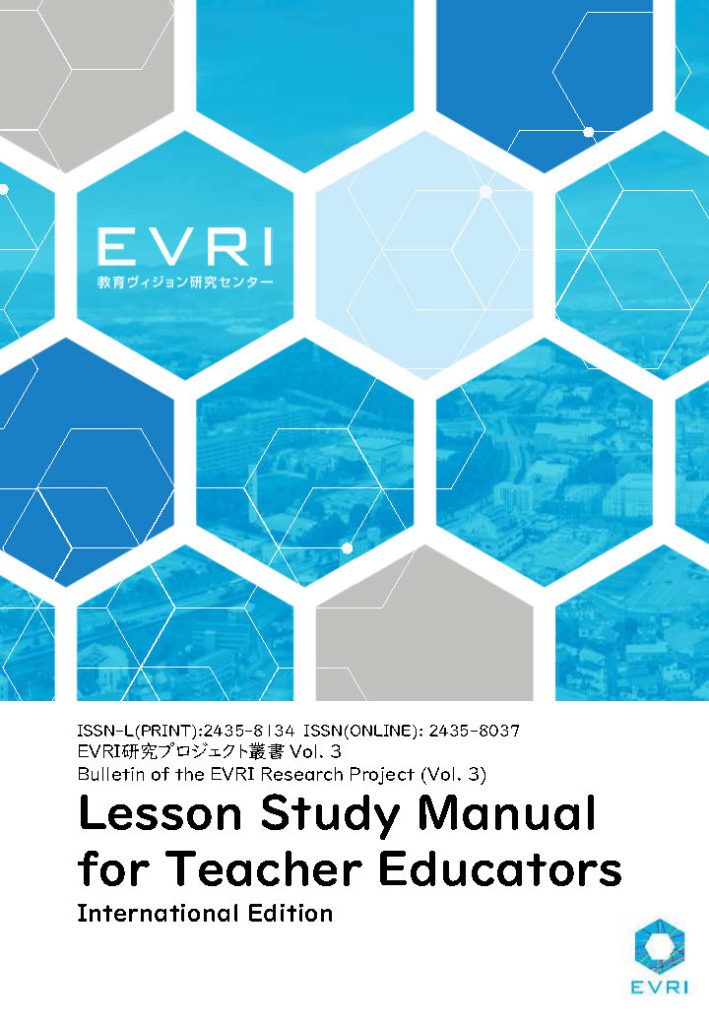 |
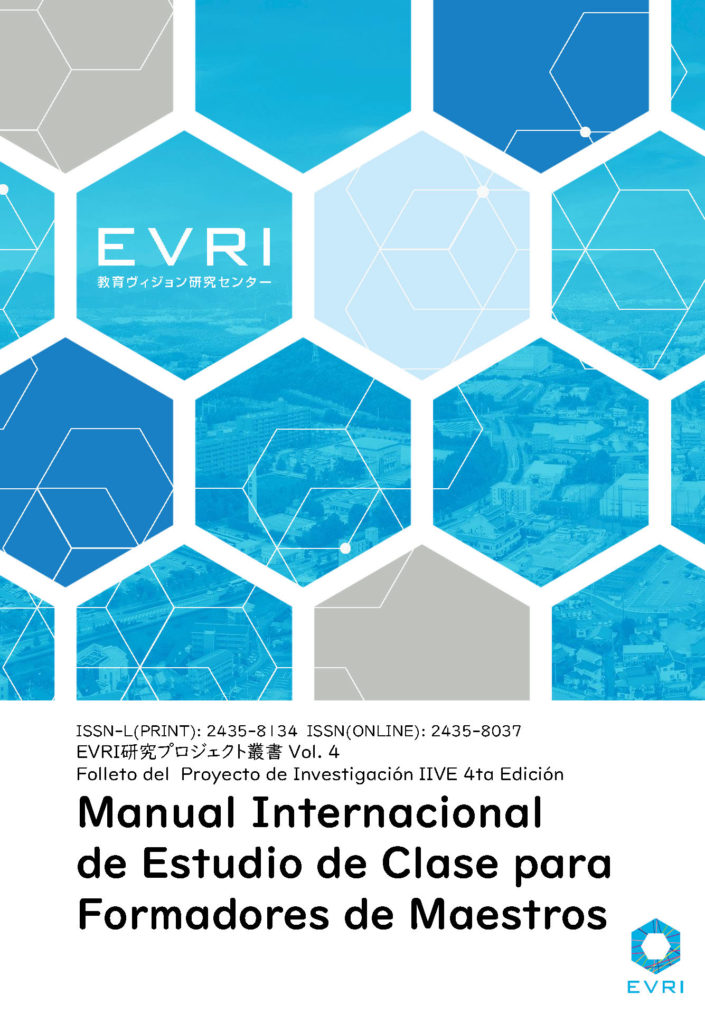 |
||||
| Lesson Study Manual for Teacher Educators: International Edition | Manual Internacional de Estudio de Clase para Formadores de Maestros |
2. Lesson Study in Pre-Service Teacher Education (seminar)
EVRI held a seminar to discuss how Lesson Study works in pre-service teacher education in Japan.
In Part 1, two presenters introduce Lesson Study in relation to teaching practicum and the courses in teacher education. In Part 2, the presenters reflect on their own learning journeys: the origins of their lesson models and the triggers that transformed their lectures and instructions as teacher educators.
When you watch this video, it is recommended that you set up subtitles/closed captions. These will be helpful to “open transcripts” from option “・・・” under the video.
| Part 1 | Part 2 | ||||
3. Lesson Study in In-Service Teacher Education (seminar)
EVRI held a seminar to discuss the role of Lesson Study in the professional development of in-service teachers, both inside and outside school.
In Part 1, two presenters introduce their cases of in-service teacher education. Part 2 involves discussions about the significance of Lesson Study for in-service teachers.
| Part 1 | Part 2 | ||||
4. Discussion: Lesson Study-based Teacher Education in Japan (seminar)
EVRI held a seminar to discuss Lesson Study-based teacher education in Japan from a broader perspective (its characteristics, challenges, potentials, etc.)
This seminar first assumes the difference between Japanese Lesson Study (Jugyou Kenkyuu) and global Lesson Study and explores the definition, significance, and challenges of Jugyou Kenkyuu. Part 2 discusses Kyouzai Kenkyuu (study on teaching contents and materials) as one of the core processes in Lesson Study.
| Part 1 | Part 2 | ||||
Learning materials 2-4 are seminars on “editors’ talk” of the forthcoming book
“Lesson Study-based Teacher Education: The Potential of the Japanese Approach in the Global Settings” (Routledge).
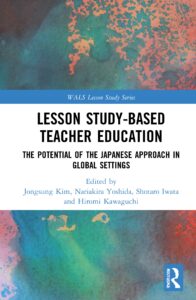
Further Reading
- Angelini, M. L., & Álvarez, N. (2018). Spreading lesson study in pre-service teacher instruction. International Journal for Lesson and Learning Studies. 7(1), 23-36.
- Chichibu, T., & Kihara, T. (2013). How Japanese Schools Build a Professional Learning Community by Lesson Study. International Journal for Lesson and Learning Studies 2(1), 12–25. http://dx.doi.org/10.1108/20468251311290105
- Dudley, P. (Ed.). (2015). Lesson Study: Professional learning for our time. New York, NY: Routledge.
- National association for the study of educational methods (Ed.). Lesson study in Japan. Hiroshima: Keisuisha
- Lewis, C., & Takahashi, A. (2013). Facilitating curriculum reforms through lesson study. International Journal for Lesson Learning Studies, 2 (3), 207–217.
- Lewis, C., & Tsuchida, I. (1998). A lesson is like a swiftly flowing river: how research lessons improve Japanese education. American Educator, 22(4), 12-17, 50-52.
- Wood, K. (2018). The many faces of Lesson Study and Learning Study. International Journal for Lesson and Learning Studies, 7(1), 2-7.
- Zeichner, K. (2010). Rethinking the connections between campus courses and field experiences in college-and university-based teacher education. Journal of teacher education, 61(1-2), 89-99.
Supplementary
Because the learning materials are partially highly contextual and local, following links will help your understanding. Please visit the links below as your want.
PELSTE 2021 welcomes three delegates from INEI institutions as “participants” who will present their ideas at the symposium.
【Peace Education Section: Participants】
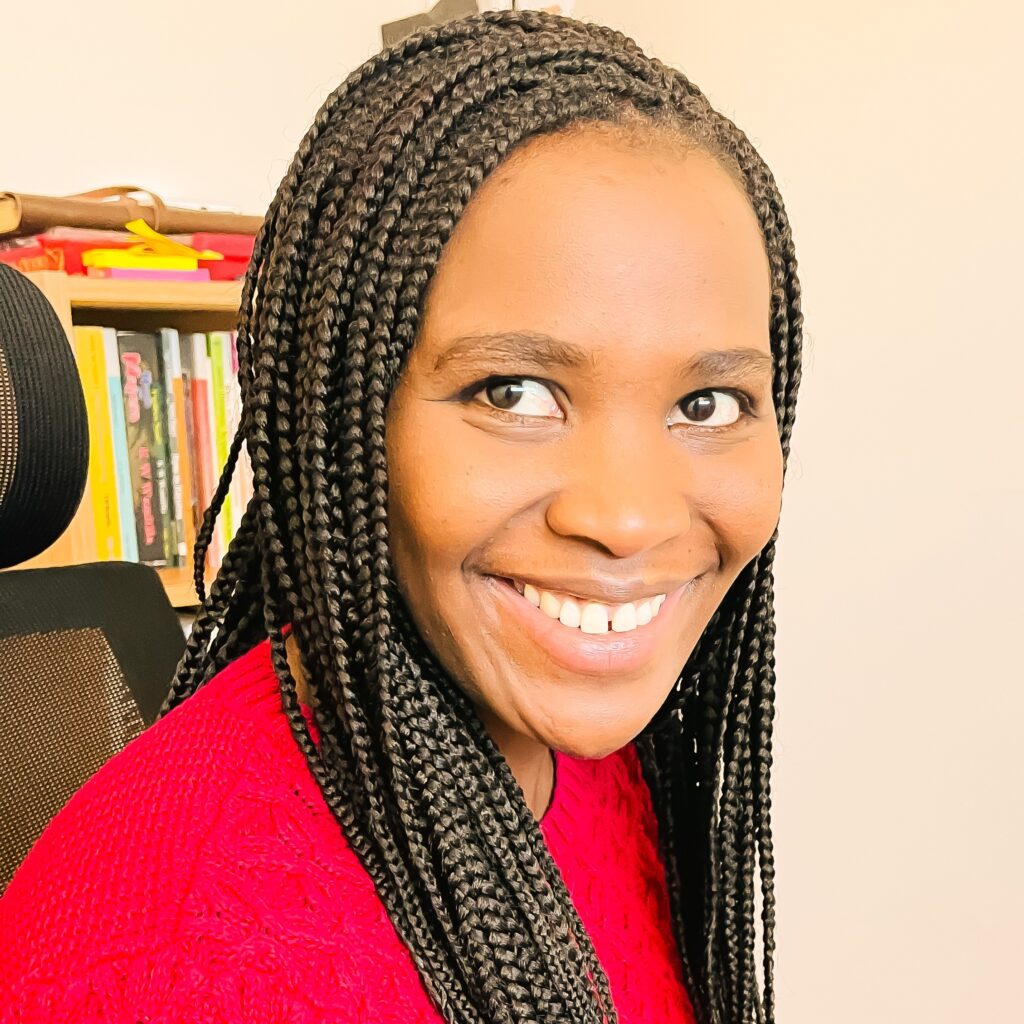 |
Ms. Cecilia Kyalo University of Wisconsin-Madison (United States) “I am a Ph.D. candidate in the Department of Curriculum and Instruction at the University of Wisconsin-Madison. My research is on HIV/AIDS education in Africa. I have extensive experience in teaching English as a Second Language (ESL). I hold a master’s degree in modern languages with emphasis on applied linguistics and TESL from the University of Mississippi and a bachelor’s degree in education, linguistics, and literature from the University of Nairobi. I was a Fulbright Fellow at the University of Florida in 2014 and a Network Fellow with WIDA Consortium in 2018.” Learn more about the delegate |
 |
Dr. Kevin Kester Seoul National University (South Korea) “Hi, I’m Kevin Kester. Assistant Professor of Comparative International Education and Peace/Development Studies at Seoul National University (서울대학교), and Director of the Education, Conflict and Peace Lab. I research educational responses to peace, conflict and development in local and global contexts. My most recent book is The United Nations and Higher Education: Peacebuilding, Social Justice and Global Cooperation for the 21st Century. I completed my PhD and postdoc at the University of Cambridge. Prior to moving to Seoul National University I was Assistant Professor of Education at Keimyung University (계명대학교) and Director of Studies for Education at Queens’ College, University of Cambridge. I serve in various leadership capacities with the Comparative and International Education Society and the Korean Educational Research Association.“ Learn more about the delegate |
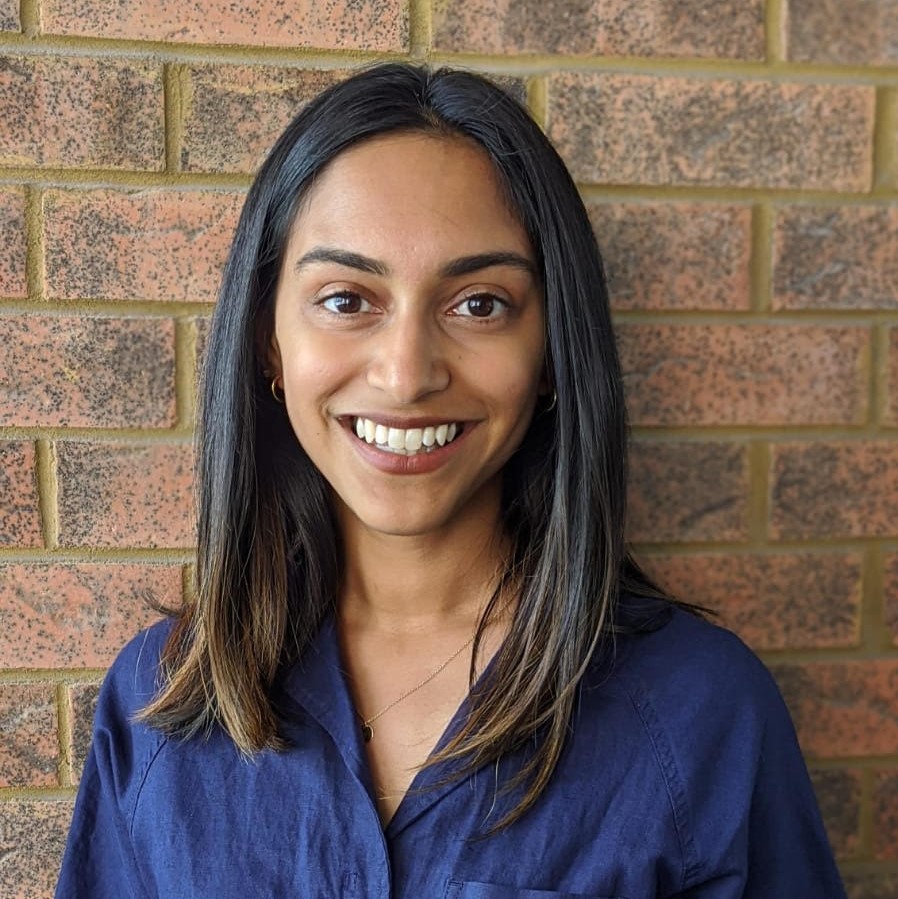 |
Ms. Myuri Komaragiri Ontario Institute for Studies in Education, University of Toronto (Canada) “I am a doctoral student at OISE University of Toronto (Uoft) in Higher Education, where I lead the Education, Conflict and Peacebuilding Interest Group. My research interests are in higher education for stateless and internally displaced populations and the role of higher education in the humanitarian-development-peace nexus. I completed my M.A in Education and International Development at University College London, with coursework and research that concentrated on peace education and education in emergencies. I am also the Program Coordinator for the International Development Studies program at UofT and have worked on education projects in Guatemala, Morocco, and Jordan. I currently advise and mentor two refugee education NGOs that operate out of the MENA region. The engagement with students and teachers that are working in Peace Education is what inspires me to continue research in this area, and I am grateful for the opportunity to learn from and participate in PELSTE 2021.” Learn more about the delegate |
【Peace Education Section: Coordinators】
 |
Dr. Russell Sarwar Kabir Psychoeducation, Experiential learning Heeding the call from Sankichi Toge that still resonates, “Can we forget that silence / in that stillness?”, peace education helps us honor the stories of those who were lost by awakening and affirming our common humanity. Learn more about the coordinator |
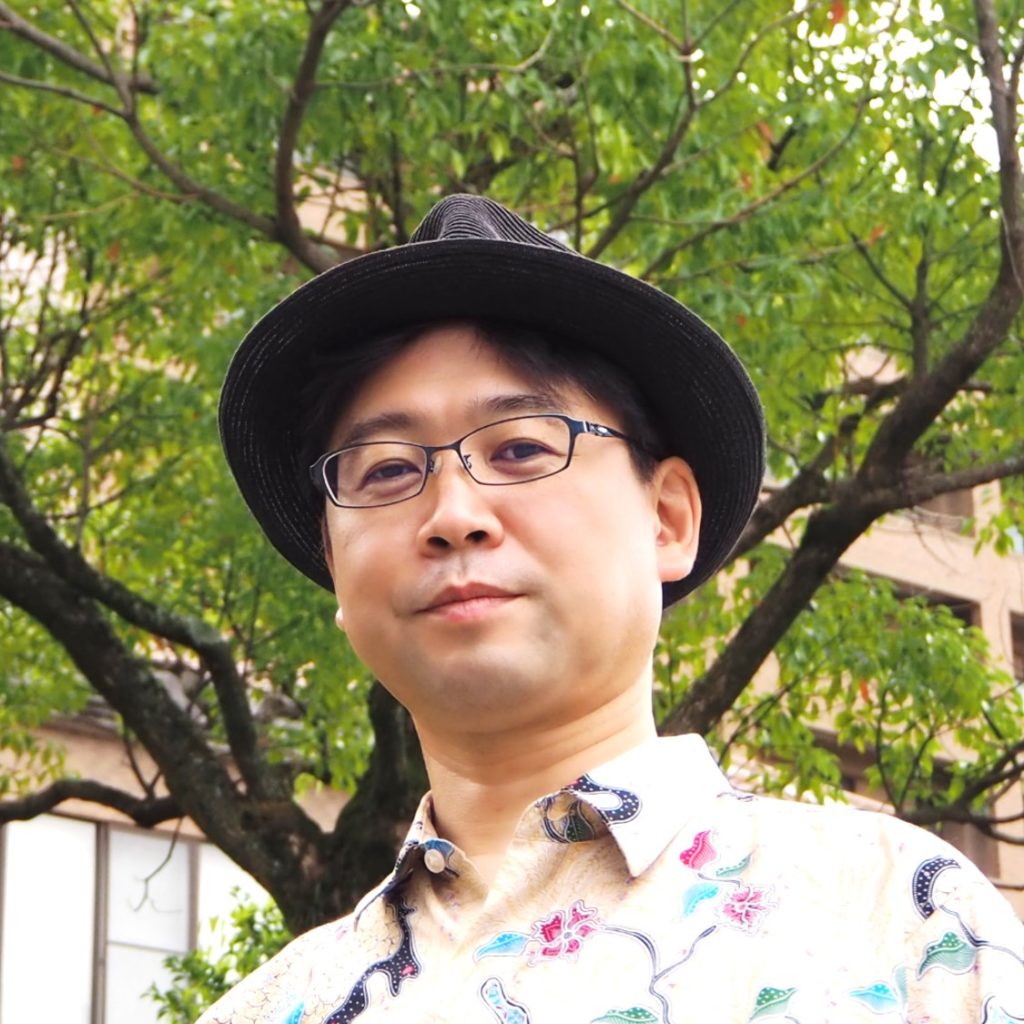 |
Dr. Takayuki Kawaguchi Japanese education, A-bomb literature Let’s talk together about the future of peace education! Learn more about the coordinator |
 |
Dr. Yasushi Maruyama Philosophy of Education, Teacher Education “Free yourself from the picture that holds you captive!” Learn more about the coordinator |
【Lesson Study Section: Participants】
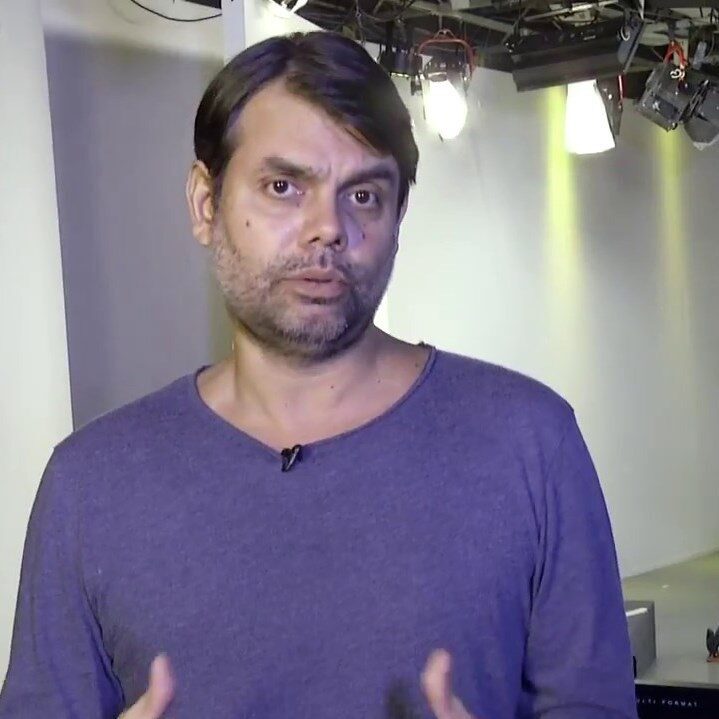 |
Dr. Agnaldo Arroio University of São Paulo (Brazil) “Hello everyone, I will introduce myself briefly my name is Agnaldo Arroio, I am from the Faculty of Education of the University of São Paulo in Brazil. I have a background in Sciences and in Audiovisual and I try to develop my work articulating the different fields in Education. I am interested in getting to know new cultures, places and people and I think this initiative contributes to an intercultural dialogue. I like to work with teachers who deal with the day to day of the school, because it brings us closer to reality. Other more academic information can be found on my CV“ Learn more about Agnaldo |
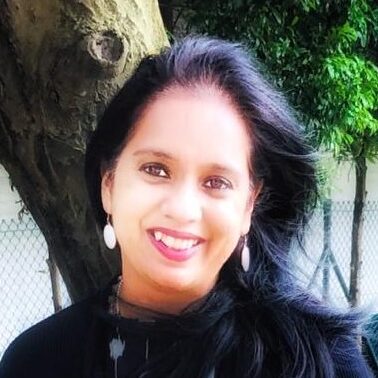 |
Ms. Indira Subramanian Nanyang Technological University (Singapore) “Indira brings in two decades of experience in the field of teaching, curriculum development, and teacher training. She began her career as a teacher before moving into teacher education. She has worked extensively strategizing and facilitating ground level solutions for teacher development in India by working with international partners. In addition to conceptualizing whole school improvement solutions, she has designed programs and facilitated workshops for heads and teachers across various geographies. She has also headed projects dealing with intensive, alternative teacher preparation courses blending digital and face to face modes. She is currently a doctoral student in education at National Institute of Education, Singapore.” Learn more about the delegate |
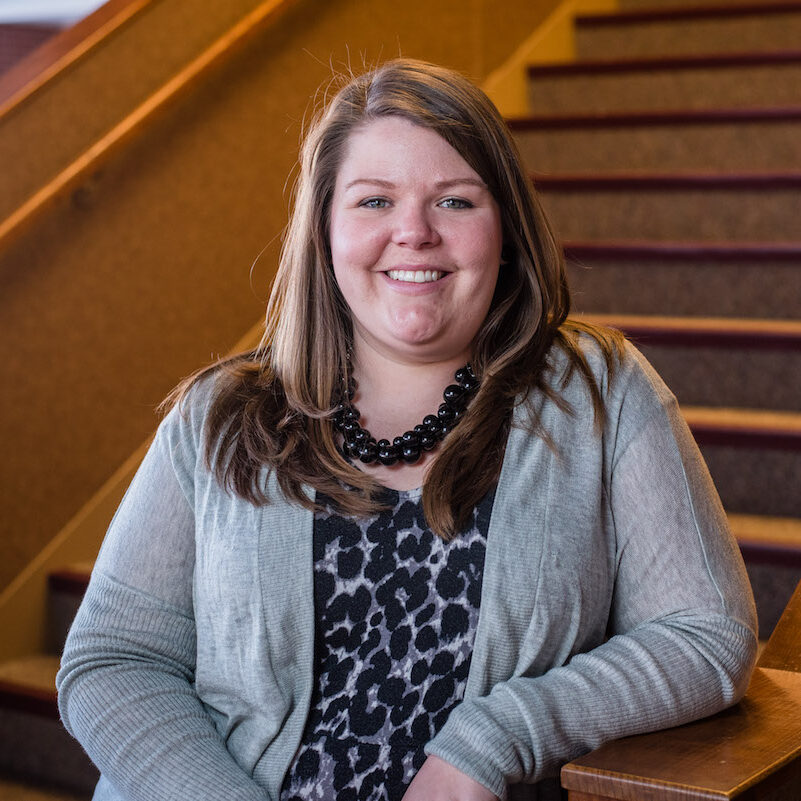 |
Ms. Kaycee Rogers University of Wisconsin-Madison (United States) “Kaycee Rogers is an ESL Faculty Associate in the Secondary Teacher Education Graduate program at the University of Wisconsin-Madison. She is passionate about teacher education, and improving the cohesiveness between the current needs of K-12 students and the preparation of future teachers. Her expertise is in ESL, having worked with language learners in a variety of K-12 settings, including international bilingual education, immersion setting, and English Learner programs. She is a professional educator with a drive to improve education. She stays current with public policy regarding education, and is interested in effective teaching. She was recently accepted to the doctoral program in Curriculum and Instruction at UW Madison, and will begin her PhD program Fall 2021, studying Teacher Education and ESL/Bilingual Education.” Learn more about the delegate |
【Lesson Study Section: Coordinators】
 |
Dr. Brett Raymond Walter Foreign and Second Language Education, Intercultural Education “I am looking forward to hearing international interpretations of our lesson study.” Learn more about the coordinator |
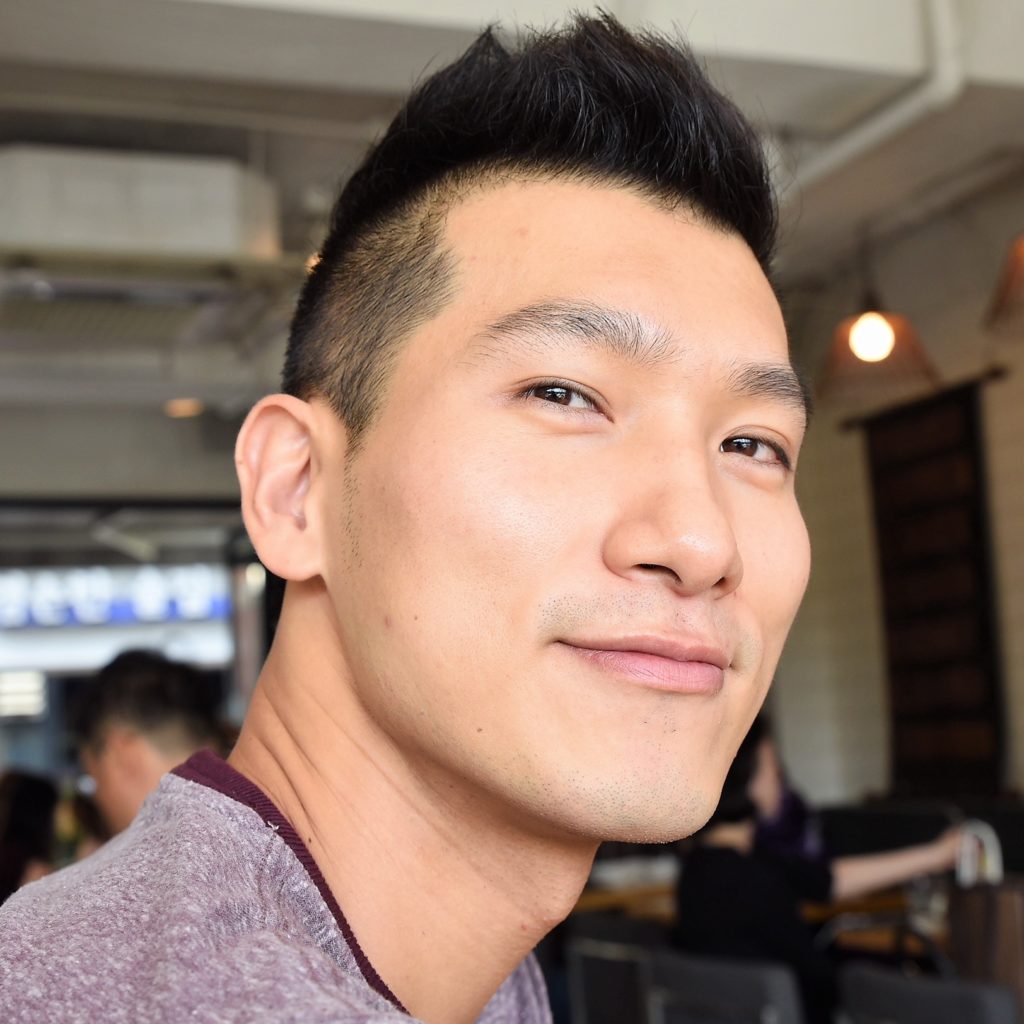 |
Dr. Jongsung Kim Social Studies, mutual understanding As a “Stranger”, I have been exploring Lesson Study-based Teacher Education in Japan. I am looking forward to talking with my fellow “Strangers” about Lesson Study! Learn more about the coordinator |
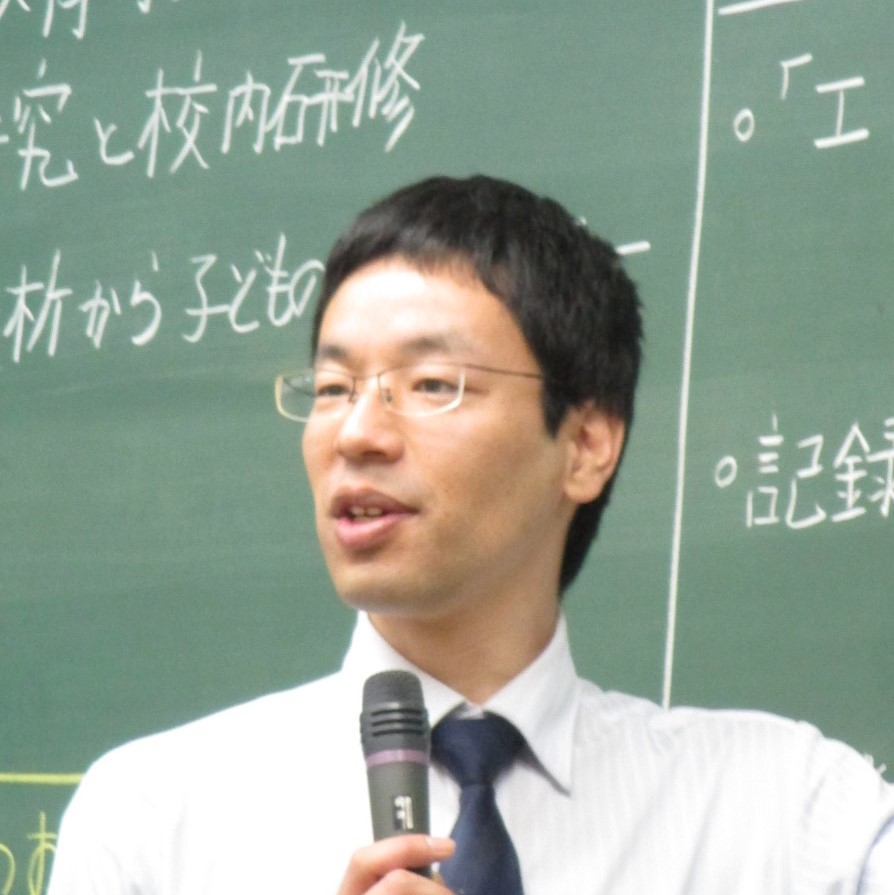 |
Dr. Nariakira Yoshida The educational method, Lesson Study Let’s step forward from Jugyou Kenkyuu in Japan to the Lesson Study of the world! Learn more about the coordinator |
On March 20-21, 2021, the Educational Vision Research Institute (EVRI), in collaboration with the Internal Committee of INEI at Hiroshima University, held a symposium for Peace Education and Lesson Study for Teacher Educator (PELSTE).

On the first day of PELSTE, the symposium focused on “Peace Education.” With three participants and 60 visitors, the significance and challenges of “Peace Education” were discussed.
Firstly, EVRI Director Kazuhiro Kusahara made a speech and explained the purpose and program of PELSTE 2021. Yasushi Maruyama, coordinator of the PELSTE 2021 Peace Education Section and chair of the INEI Committee, continued the opening remarks. He stated that the symposium would review peace education practices in Hiroshima, which had been distributed in the pre-conference learning materials, from the perspective of each participant’s academic, cultural, and social contexts, and discuss how peace education could be redesigned.
Three participants made their proposals.
Ms. Cecilia Kyalo, of the University of Wisconsin-Madison, USA, warned against “reducing history into dualistic polarities” of perpetrators versus victims, and suggested the importance of understanding the complex and ever-changing relationships among actors. She pointed out that the same problem can be seen in the peace education curriculum in Kenya, where peaceful coexistence among ethnic groups is an urgent task. She suggested the importance of encouraging students to listen to the “polyphony” of voices in history. She found this kind of dialogue with different “voices” in the peace education practice at Hiroshima Global Academy (HiGA).
Dr. Kevin Kester of Seoul National University, South Korea made three points. First, to resist modernist thinking – Eurocentricism – and to understand theories from the Southern Hemisphere and the East, without Western thinking. Second, to ensure that an ethical stance against colonial thinking is taken in all dimensions, from educational policy to curriculum practice; and third, to stop treating education as a panacea for peace. He suggested that we should not only look at what ideas are held by whom, and where, but also the specific context and background (time and place) in which such ideas are born.
Ms. Myuri Komaragiri of the University of Toronto, Canada, referred to the challenges of peace education in relation to her own research into refugees and conflict resolution. In particular, she pointed out the problem of formal school education being complicit in “epistemological injustice,” which excludes the knowledge of disadvantaged groups such as refugees. She argued that peace education practices should start from organic social relationships rooted in local wishes and experiences, rather than being forced from the outside. She also emphasized that trusting relationships with marginalized people must be reconstructed, while taking into consideration the burden of reminding survivors of their painful experiences.
In the discussion, Russell Kabir, Takayuki Kawaguchi, and Yasushi Maruyama served as commentators, discussing the challenges of peace education and how to overcome them. In the first half of the discussion it was pointed out that peace education, which is often overly politicized as if it were an act against the state or political actors, is ambivalent, in that it has become an emotional and apolitical educational space inside the classroom. The discussion then continued to multiple dimensions of peace education. At the level of the national curriculum, the question was raised as to how the innumerable “many voices” of history should or could be structured. At the practice level, other questions were raised, such as whether the specific values of teachers, e.g. “anti-nuclear,” should be hidden or could be transmitted as the voice from a subject. Throughout the discussion, the importance was confirmed of keeping many narratives heard from history. The importance of reconstructing the image of peace from marginalized voices was proposed, in order to repoliticize peace education practice.
In the latter half of the discussion, the participants of the lesson study section, Dr. Agnaldo Arroio (University of Sao Paulo), Ms. Indira Subramanian (Nanyang Technological University), and Ms. Kaycee Rogers (University of Wisconsin-Madison) also participated in the discussion. They pointed out the need to find a way to transform ideal peace education into practice.
| Cecilia Kyalo’s Commentary | Kevin Kester’s Commentary | Myuri Komaragiri’s Commentary |
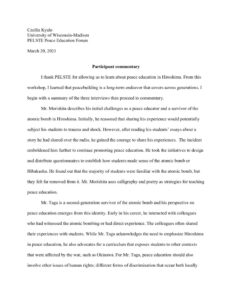 |
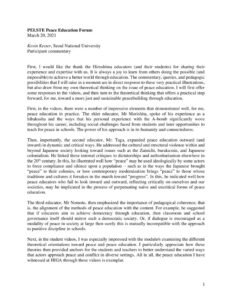 |
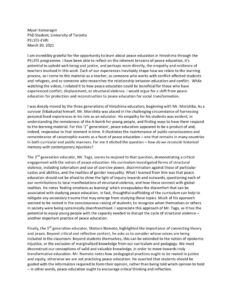 |

The symposium on the second day of PELSTE, which focused on “Lesson Study,” was held with three participants and 86 audience members to discuss the significance and challenges of Lesson Study.
Firstly, EVRI Director Kazuhiro Kusahara made a speech and explained the purpose and program of PELSTE 2021. Nariakira Yoshida, coordinator of the Lesson Study Section of PELSTE 2021, continued by stating the purpose and activities of the Lesson Study Section, which was to exchange opinions on the significance and challenges of Lesson Study from the perspective of each participant’s personal, cultural, and social contexts, based on the common question, “How and with whom do you want to share Lesson Study?”
Three participants made their proposals.
Dr. Agnaldo Arroio of the University of Sao Paulo, Brazil, based on his participation in PELSTE 2020, found in the Japanese tradition of Lesson Study “autonomy and teacher ownership” with a “prosumer” aspect, and the “school as an educational community” that includes many actors. He proposed to share his Lesson Study with the people of Piauí, Brazil. As that region has many schools, teachers, and children in culturally and socially “vulnerable” circumstances, he proposed a path to empower teachers through the transformation of in-service education programs and the formation of school communities.
Ms. Indira Subramanian of Nanyang Technological University, Singapore, began by describing her own teaching experience in India. She pointed out that Lesson Study can be a sustainable response to the structural and systemic challenges of the Indian teacher education system. In particular, she suggested “six questions” to go through when starting a Lesson Study project in a new place, and emphasized the importance of democratic collaboration and cooperation among teachers. Finally, by going through these questions, she raised the importance of recontextualizing Lesson Study as a Japanese heritage into local contexts full of the cultural and social demands, and the need to overcome “educational borrowing” that ignores these contexts.
Ms. Kaycee Rogers, of the University of Wisconsin-Madison, USA, discussed the significance and challenges of Lesson Study considering the status of teacher training in the United States. Based on her experience as a teacher and researcher interested in learner-centered teaching theory, she proposed the importance of repeating the cycle of class practice, critique, and improvement. She pointed out that the significance of Lesson Study is that it enables collaboration with various stakeholders. It is not limited to the conventional framework of teacher training carried out by a triad of university teachers, supervisors, and trainees. In particular, she emphasized interdisciplinary teacher interaction and pointed out the possibility of capturing students’ learning from multi-layered perspectives.
The discussion was facilitated by Brett Walter and Jongsung Kim. It focused on a controversy: that Lesson Study has become an “educational formula”. The importance of cultural “recontextualization,” which was strongly reflected in the three speakers’ proposals, and concrete ways to achieve it were discussed, as well as how to “measure” success.
Cecilia Kyalo, Kevin Kester, and Myuri Komaragiri, the participants in the Peace Education Section, also joined the discussion. They argued that Lesson Study has the great advantage in “systematizing” teachers’ educational experiences, and that it has potential to transform black box classroom practices into objects of teachers’ collaborative inquiry, and, through this inquiry, to “discover” the existence of diverse cultures brought into the classroom by children and teachers, and finally to “connect” them to classroom development. On the other hand, further questions were raised about the consideration of “context” that cannot be avoided in the intercultural development of Lesson Study. The following matters were specifically raised: how to avoid reducing the complexity of different cultures in the process of such “well-systemized” Lesson Study, how to motivate new actors to engage in Lesson Study, and how Lesson Study can be connected to teacher well-being. Throughout the discussion, the importance of critically questioning the “success” narratives that are often promised in Lesson Study was confirmed.
Finally, Dr. Norio Matsumi, Dean of the Department of Education, Hiroshima University, gave the closing remarks. EVRI, the organizer of PELSTE 2021, will continue to develop the front line of Peace Education and Lesson Study in the coming years.
You can see the commentaries by three participants that will be presented during the seminar.
| Agnaldo Arroio’s Commentary | Indira Subramanian’s Commentary | Kaycee Rogers’s Commentary |
 |
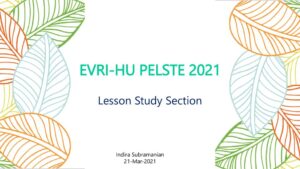 |
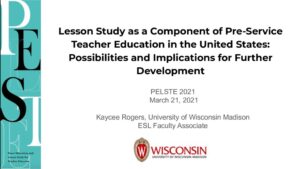 |
After the fruitful discussions at both symposia, participants made their remarks on their achievements and challenges. “The potential of PELSTE is enormous given its topical relevance and contribution across classrooms, regardless of geography”, “The strength of PELSTE is in its ability to nurture these epistemic learning communities across time and space”, “I also highlight that it was a wide discussion, which presented some historical and cultural aspects in order to broaden the understanding of LS.”
As they have also prospected the new stage of PELSTE, stating that, for example, fieldworks in Hiroshima visiting Japanese Schools will bring “a deeper understanding of Lesson Study and Peace Education”, that “sustained connection and community” in PELSTE members is desirable, and that the “further involvement and engagement of international scholars and students in collaborations in research, teaching, publications” are expected.
EVRI will explore the new frontier of Peace Education and Lesson Study for Teacher Educator without cease. We look forward to broaden our community with all of international scholars and students.
e-mail :evri-info@hiroshima-u.ac.jp
Tel & Fax: 082-424-5265
contact >